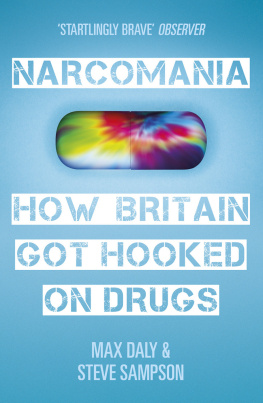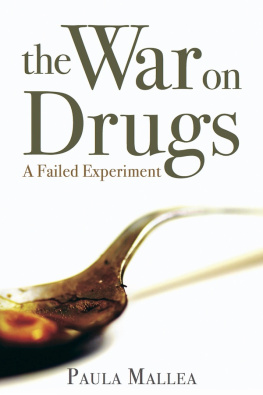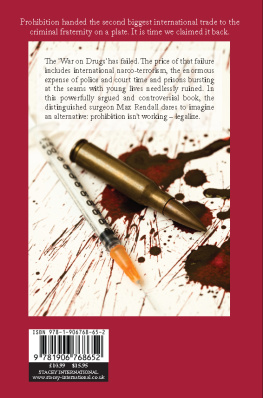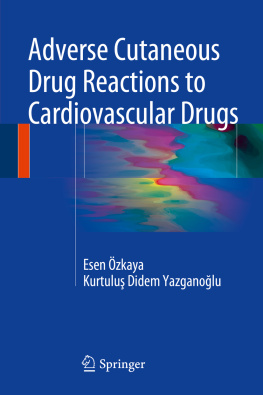Contents
About the Book
Narcomania is a timely, gripping and informative investigation of drugs in the UK. Looking at the dealers, the users, the police and the politicians, the book charts how consumption and markets have fragmented and changed over the last decade; follows the money to reveal where Britains licit and illicit economies overlap; explains where each of the major recreational drugs comes from; and maps which drugs are popular in different parts of the country. It will explode many of the myths and misconceptions about drug use, and tap into fraught debates about how politicians, parents and police should respond.
In the wake of the internet boom, globalisation and a decade of decadence, Britain sits at a crossroads in the legalisation-versus-intolerance debate. While other nations have succeeded with progressive experiments, inertia and self-contradiction define British drug policy to the detriment of everyone except the criminal underworld. Unsurprisingly, in the light of this book, our politicians are confused about what will please or displease the all-important middle class electorate. Equally unsurprisingly, however, so much myth and confusion surrounds the subject that clarity must be brought to chaos if the wisdom of the crowd is ever to surface....
About the Authors
Max Daly specialises in drugs and social affairs journalism. He was editor of Druglink, feeding the national media and the sector with UK drug-use trends, investigations and analysis of the UK drug market for eight years. His articles have informed the government and the Serious Organised Crime Agency. Previously he was deputy news editor at the Big Issue. He has written for the Guardian, The Times, VICE, Marie Claire and the Independent.
Steve Sampson has worked across local, regional and national press covering a variety of sectors from politics, regulation and finance to social exclusion, drugs and crime. He has written for the Guardian, Time Out, Big Issue and has written for Druglink for the past fifteen years. He currently works as a freelance features writer and copy editor.
Narcomania
How Britain Got Hooked
on Drugs
M AX D ALY &
S TEVE S AMPSON

This ebook is copyright material and must not be copied, reproduced, transferred, distributed, leased, licensed or publicly performed or used in any way except as specifically permitted in writing by the publishers, as allowed under the terms and conditions under which it was purchased or as strictly permitted by applicable copyright law. Any unauthorized distribution or use of this text may be a direct infringement of the authors and publishers rights and those responsible may be liable in law accordingly.
Version 1.0
Epub ISBN 9781448136490
www.randomhouse.co.uk
Published by Windmill Books 2013
2 4 6 8 10 9 7 5 3 1
Copyright Max Daly and Steve Sampson 2012, 2013
Max Daly and Steve Sampson have asserted their right under the Copyright, Designs and Patents Act, 1988, to be identified as the authors of this work.
First published in Great Britain in 2012 by William Heinemann
Windmill Books
The Random House Group Limited
20 Vauxhall Bridge Road, London SW1V 2SA
Addresses for companies within The Random House Group Limited can be found at: www.randomhouse.co.uk/offices.htm
The Random House Group Limited Reg. No. 954009
www.randomhouse.co.uk
A CIP catalogue record for this book is available from the British Library
ISBN 9780099538035
For Hajra and Mikael
For Safia and Sidney
Preface
Drug stories often combine three key elements money, sex and power. Drug stories not only sell newspapers, but are ever-present across the Internet, on television, in films and in music. Yet a lot of what we read, see and hear are half-truths, exaggerations and urban myths. For all the column inches and coverage dedicated to discussing the issue from afar, we know very little about the true shape of the drug industry in the UK.
It is an industry that is vast and ever-mutating, and one that is hardwired into this countrys cityscapes a hidden edifice, involving tens of thousands of workers and an army of law-enforcers and professionals; a realm which links the deeply emotional psychoactive world of intoxication with cut-throat economics; a world that affects us all.
As investigative journalists who have covered drugs and drug crime for over twenty years reporting on the minutia of the trade, charting and uncovering trends and watching as drug stories emerge and are passed through a media prism we found ourselves in a unique position to tell the true story of illegal drugs in Britain. We have attempted here to provide as full and detailed a portrait as possible, though the sheer scope of the subject meant we had to exclude some areas, and each chapter would undoubtedly benefit from a book-length investigation. Many of the names of those we have interviewed, on both sides of the law, have been changed to protect their identity and, in some cases, to protect them from harm.
What follows is a panoramic journey through Britains drug landscape from the streets to Whitehall, and back. We meet users, dealers, elusive middlemen, drug-squad officers and bankers, taking a ringside seat as the media and politicians hold forth on the drug industry and as new scare stories hit the news-stands.
Our aim has been to anchor the British drug trade in some sort of reality to examine one of Britains most prosperous, though illicit, economies through the real stories of those involved. If progress is to be made in reducing the harms to society of the drug trade, of making headway on this seemingly unsolvable problem, then one of the first steps has to be to remove the mask and see what lies beneath, to view the reality of the situation rather than rely on hoary tales and tired rhetoric.
Unfortunately for those who would rather we turned a blind eye to the drug trade, it is a living, breathing, powerful entity. And it is closer than you think.
Introduction
The Face Behind the Mask
The ketamine hit home about ten minutes down the path on the way to the main stage at Glastonbury. Lucy and her friends James, Paul and Pete had each snorted a thick line of the hallucinogenic anaesthetic drug in their tent before heading out into the night.
As they walked arm in arm, Lucys feet started feeling heavy, as if someone had poured cement into her boots. Her legs began to slow. Then the visuals kicked in. She began to see in a kind of tunnel vision, darkness surrounding the dimly lit path, with hundreds of faces coming towards her and passing by. Who was that man and why did he look like a skull with a wig on? What was that granny doing with her boobs out? And who was that mad-eyed hippy frothing at the mouth?
Three cowgirls came up to them with a tray of vodka jelly. Look what we made for you, they said, popping a cup of shimmering scarlet into their hands.
Lucy wasnt even sure if she knew where her mouth was. She turned to Paul and saw that his eyes were wobbling from side to side, his mouth tightly clenched. They looked at each other and crumpled in hysterics, bent over double, tears streaming from their eyes. They couldnt speak.
After a while, they continued their journey, stumbling into oncomers every few paces, but no one seemed to mind. More people streamed past. Who was that dressed up as the Queen Mum? And what were all those girls in tutus doing in that tree? Lucy had forgotten she had taken drugs: the world around her had gone mad all she could do was laugh at it.
Next page







